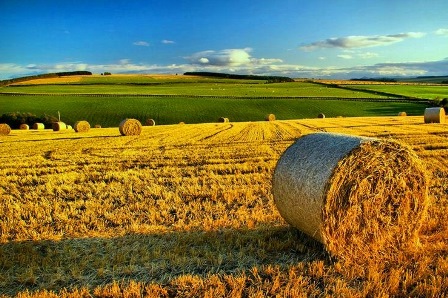
WTI Magazine #61 2015 May, 29
Author : Coldiretti and Univerde Translation by:
Italian agriculture has become the "most green" in Europe ranking at the top level for the number of products with designation of origin (PDO/PGI) that safeguard tradition and biodiversity. Italy also holds the leadership in Europe for the number of organic farms and the most broad network of farms and markets selling local food (the so called "Km 0" products) that don't have to travel long distances, avoiding polluting transport.
In addition to that Italy excels for the lowest incidence of agri-food products with off-specification chemical residues and the decision not to cultivate genetically modified organisms (GMOs), like 23 out of 28 EU member States.
These data emerged during the meeting "Agriculture defeating the crisis, the challenge of multifunctionality" organized at EXPO Milano 2015 by Coldiretti and Univerde. This event was held to celebrate the fourteenth anniversary of the approval of the Italian framework law No. 228 of 18 May 2001 that has revolutionized the agriculture activity.
Italy is the only country - according to Coldiretti - that can boast of 271 products with designation of origin (PDO/PGI), more than those recorded in France. It's the only country that can rely on 43 852 organic farms surpassing Spain and representing the 17% of the European ones. Italy is at the top of the world for food safety with the lowest number of food products with irregular chemical residues (0.2%), almost 10 times less than the European average (1.9%) and more than 30 times lower than non-EU products (6.3%).
The direct sales network of "Campagna Amica" has nearly ten thousand reference points along the Italian peninsula where it is possible to buy "km 0" food supporting local farmers and taking actions against environmental pollution caused by transport. It stands out compared to both EU countries and the rest of the world.
This path has been possible thanks to the great effort towards the renewal of Italian agriculture: one farm out of three was born in the last decade with a clear orientation towards multifunctionality. There are countless of innovative activities : from on-farm processing to direct sales, from educational farms to agri- nursery but also recreational activities such as garden care and cooking classes in the countryside, social farming for the inclusion of the disabled people, prisoners and drug addicts, the maintenance of parks, gardens, streets and landscape or the production of renewable energies.
The above mentioned law of 2001 made all these opportunities feasible, pushing the boundaries of agriculture beyond its traditional activities and revolutionizing the Italian countryside by creating new employment opportunities in the agriwellness, environmental protection, energy savings, waste recycling and social services from agri-nursery to pet therapy.
This change has recently been recognized by the Italian National Institute of Statistics which carried out a revaluation of the added value of the agricultural sector equal to 7.5% (with a positive impact on GDP of 0.1%) in order to consider the "new emerging activities such as renewable energy production (mainly solar and biomass), educational farms, recreation activities, on-farm craftsmanship, social farming, direct sales, feed production, maintenance of parks, gardens, territory and landscape". Young people are the ones to seize upon these opportunities as shown by the fact that during the last trimester of 2014 the agricultural holdings managed by people under 35 rose to 49 871 (1,5% increase), the 70 % of which carries out multifunctional activities according to Coldiretti's survey.
"The success of Italian agriculture can be found in its sustainability, in the extraordinary quality with distinctive features, and in its variety and rooted presence in the territory that are unique in the world", Coldiretti's President Roberto Moncalvo said stressing that "Expo Milano 2015 is a huge opportunity to deeply rethink food production and distribution systems, aiming at a global sustainable development model. An eco-friendly model with economic and social protection systems able to secure a future for the agricultural sector and to provide safe and accessible food to everybody, in Italy and in the poorer countries.
ITALIAN AGRICULTURAL GREEN RECORDS - Source: COLDIRETTI
1) Italian agriculture is among the most sustainable ones. With 814 tons for every million euro produced by the sector, Italian agriculture not only emits 35% less greenhouse gas than the EU average but is definitely better than Spain (12% less), France (35%) , Germany (39%) and the UK (58% less greenhouse gas).
2) Italy reaches the top of world food safety. It is the country with the smaller amount of chemical residues in food products (0.2%, a third less than the previous year), almost 10 times lower than the European average (1.9%, increased by about a third compared to the past year) and more than 30 times lower than non-EU products (6.3%).
3) Italy is the first European country in terms of organic farmers. With 43 852 organic farms (17% of those in Europe) Italy is the champion of Europe in the sector, followed by Spain (30 462 farms, 12% of EU) and Poland (25 944, 10% of the European market).
4) Italy is the strongest country in the world for distinctive products with 271 PDO and PGI and 4 813 traditional regional specialties that safeguard biodiversity and defend traditions.
5) Italy has the most 'extensive network of farms and farmers' markets of direct sales with "km 0" products that reduce pollution caused by transport with nearly ten thousand reference points of "Campagna Amica" network (download the App Farmers for you).



